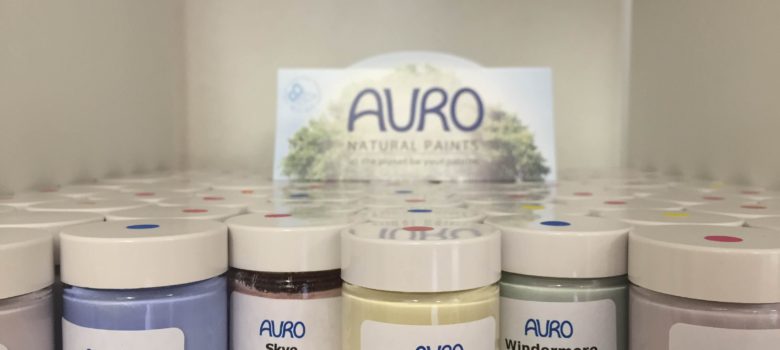
Paint is an easy – and often cheap – way to transform your home. However, it can be dangerous for both human health and the environment. There are a huge number of products on the market, and it can be confusing to know where to start when choosing brands and colours. Nowadays there’s even more choice, with several ‘eco’ options floating around. Are they right to claim this title, and why might you opt for eco paint?
Why do we need an alternative to standard paints?
There’s more than just the horrible smell to put you off using standard paints. With so much emphasis placed on the UK’s illegal outdoor air pollution levels, it is easy to forget that pollution is often even worse indoors. This issue is bad enough without contributing extra with chemicals from paint fumes.
What medical effects can chemicals in paint have?
Prolonged exposure to wet paint often causes dizziness, nausea and headaches. The mixtures contain huge numbers of chemicals such as formaldehyde and VOCs (volatile organic compounds), which are carcinogenic. These chemicals don’t necessarily stop when the paint dries – they can hang around for days.
The potentially hazardous health effects of these ingredients are well known – there are reports of them causing damage to the liver, kidneys and nervous system. Especially at risk are young children and those with existing respiratory problems. The World Health Organisation says professional decorators are 40% more likely to contract lung cancer. This speaks for itself.
Paint also has environmental consequences. The solvents and biocides included in the ingredients can have impacts during manufacture and disposal. Producing 1 litre of paint can produce a staggering 30l of toxic waste. Solvent emissions contribute to damage of the ozone layer and VOCs and CO2 emitted during manufacture hang around in the air.these
The EU currently sets limits on VOC levels in paints – but this is one of many regulations that could become redundant since the UK’s ‘Leave’ vote. So it could be wise to do your own vetting!
 There is an alternative: eco paints
There is an alternative: eco paints
Although ‘natural’ paints have been available for years, there are no clear lines drawn on what exactly constitutes an ‘eco’ or ‘natural’ label. The vast majority of these products simply contain fewer chemicals than the big brands. However, a scarce few products contain almost no chemicals, as their main ingredients are derived from natural sources.
Auro natural paints
Truly eco-friendly paints can be hard to find. That’s why we always recommend Auro. The brand has been around for 30 years and in this time it has perfected its recipe for long-lasting, versatile, ethically-sourced paint. It is toxin-free and made from 99% natural raw ingredients, based on organic linseed oil resins. Materials come from environmentally-managed sources and waste produced during manufacturing is composted. This has led to the brand being named as Ethical Consumer’s ‘Best Buy’.
Auro paint is available in hundreds of lovely colours, all dyed with natural pigments. The paint is applied the same way as standard paints, with similar coverage – so it’s definitely worth a go. The finish of the Auro paints are also first class. Because it’s microporous, it’s breathable, making it especially good for bathrooms and kitchens, where steam can lead to damp, condensation and mould. The eco paint can be used for nearly all applications and environments.
Auro has a massive range – these days, you can get an eco alternative for almost any kind of paint or finish. Next time you’re thinking of redecorating, we’d definitely recommend considering using eco paint!
Think we missed something? Do you have a different opinion?
Comment below to get your voice heard…













I used this eco paint to paint my kitchen. It seems to go on very nicely and seems nicer to use because it doesn’t smell.
Hi Lisa, we are pretty new to Eco paint, but it seems very popular, so something we are certainly going to be recommending going forward.
I was looking for eco paint for my home, and was wondering if you could give me help. I am wondering if I should go for Auro eco paint, or Earthborne? I have been reading about VOCs in paint and my wife has particular sensitivity and we need to repaint the house! I need to ensure that any new paint we do use doesn’t have these VOCs, hence looking for an ECO paint brand. Can someone confirm whether these two brands have VOCs and if so, would they mind suggesting any other brands of paint that may fit the bill. Thanks in advance for your help.
Eco paint is such a great idea. I have never understood why when you spend so much time in your home you would use such god awful chemicals during the build. I appreciate a house needs to be nice and strong, so steel, bricks and concrete are always going to be the main part of it, but using natural or at least ‘no nasty chemical’ alternatives seems to make perfect sense. We had to insulate our house and used sheep wool, we actually have a green roof (which is fab by the way), but we didn’t do use this type of paint and I know wish we had. Next time!!
Hi SuSIEWILD, we are completely with you – Eco Paints and other products of this sort are massively growing in popularity!!
ordered Auro paint from ecostore in London. They colour match and also deliver next day. http://www.theecostore.co.uk/auro-eco-paint/
Eco paint is certianly something to consider. We used it in our children’s room. The thought of using a nasty product that they could breath in – the risk just wasn’t worth it.
Eco paint is becoming more and more popular as people are starting to spend more and more time in their homes.
Keep it coming, this is good stuff.
I always want to use eco friendly paint for environmental reasons and I also prefer the chalky finish they provide) To be honest though I find lots of installers who don’t want to touch them. Has anyone else had this problem?
Hi Sue, I think this problem is actually not happening as much now. Basically there weren’t many ECO paints in vibrant colours previously becuase they can’t be manufactured without VOCs however the paint companies have now found a way to make these brighter / darker colours, so more and more decorators / installers are happy to use them because they can source everything they want from the one brand.
Auro = as supplied by Greenshop, Edward Bulmer Pots of Paint & Celtic sustainables – contains terpene oils – and cause class (1) carcinogenic formaldehyde & microparticulate fumes which are drawn deep into the lungs –
This is well documented & first researched by Univ of California Berkeley
https://www.berkeley.edu/news/media/releases/2006/05/22_householdchemicals.shtml
just search “ terpenes ozone “ on the net.
Terpenes are essential oils like turpentine, pine oil, orange oil, etc which sound harmless, but which react with low level ozone (all around us) generating cancer-causing smog fumes. They are included on the ingredients list of both Auro Paints & UK supplier Edward Bulmer Paints. I cant imagine anyone knowingly buying carcinogenic paints, varnishes, etc